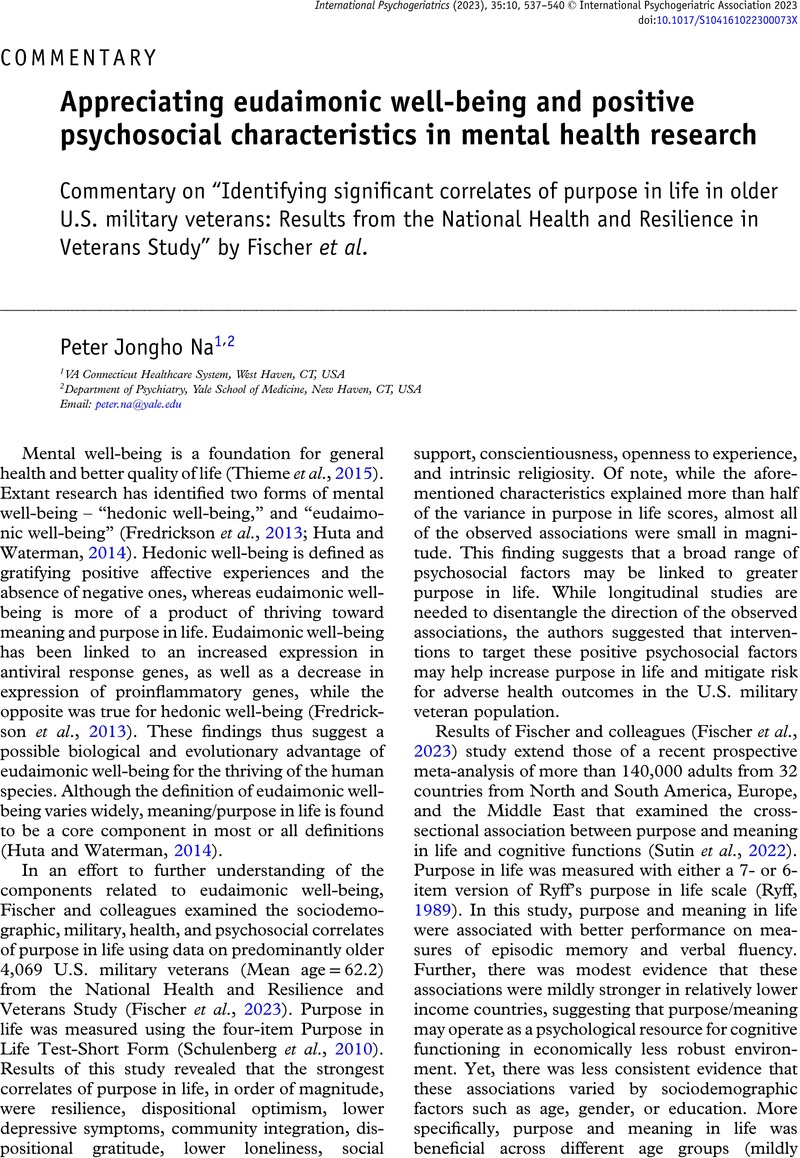No CrossRef data available.
Article contents
Appreciating eudaimonic well-being and positive psychosocial characteristics in mental health research
Commentary on “Identifying significant correlates of purpose in life in older U.S. military veterans: Results from the National Health and Resilience in Veterans Study” by Fischer et al.
Published online by Cambridge University Press: 24 August 2023
Abstract

- Type
- Commentary
- Information
- International Psychogeriatrics , Volume 35 , Special Issue 10: Issue Theme: Aging and Well-Being , October 2023 , pp. 537 - 540
- Copyright
- © International Psychogeriatric Association 2023




